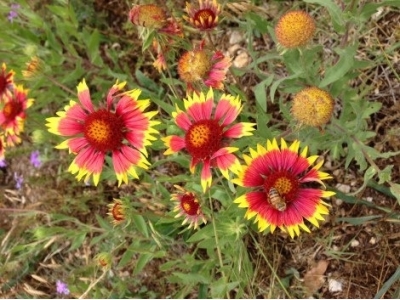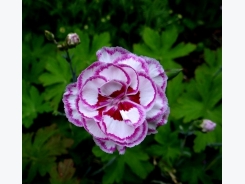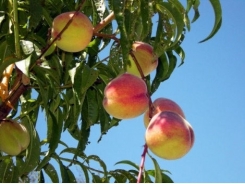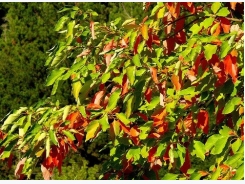How to Grow Gaillardia (Blanket Flower)

Gaillardias, also known as blanket flowers, are good news for the gardener who has poor, dry soil and hot, sunny conditions.
These bright, cheery flowers actually prefer poor soil and heat and are short-lived when planted in heavy, moist soil. Gaillardias have fringed petals and interesting markings in yellow, orange, pink and red. Some experts believe their name is in reference to the patterns found on Native American blankets. They are often known as indian blanket flowers in the state of Texas. Others believe the name “blanket flower” refers to their habit of blanketing, or spreading, over an area.
Over 30 species of gaillardia are native to the hills and plains of North America. They resemble black-eyed Susans and sunflowers, with their bright colors and daisy-like form. The plants grow 8 to 24 inches tall and spread quickly. Gaillardias are classified as annuals, biennials or perennials, depending on the variety and growing conditions. Perennial varieties are typically hardy in U.S.D.A. plant hardiness zones 4 through 9.
Growing Gaillardia
To grow gaillardias, use nursery transplants or start plants from seed. Sow seeds directly in the garden after the last frost, or start them indoors in a seed starting tray. They prefer slightly cool soil to germinate with temperatures between 50 and 65 degrees. Gaillardias germinate and grow quickly and will bloom the first summer.
Plant gaillardias with other heat-loving native or xeriscape plants in full sun. A few good combinations include black-eyed Susans, salvia, catmint, coreopsis, coneflower, lamb’s ear and Jupiter’s beard. Add compost and manure to the soil prior to planting, especially if your soil is heavy. Blanket flowers grow best in light, well-draining soil that’s on the sandy side. They’ll likely rot in heavy clay soils.
Gaillardia Growing Tips
Gaillardias are fairly maintenance-free plants. Water the bed once or twice per week during dry conditions and apply a balanced fertilizer in the spring when new growth appears. You don’t have to deadhead the blossoms, but doing so keeps the plants looking tidy and might encourage more blooms. If your blanket flowers look straggly and unkempt in midsummer, shear them down. They’ll come back with a more compact form and produce more flowers. In general, gaillardias bloom from midsummer to fall.
Gaillardias attract both butterflies and birds, such as finches. Leave a few seed heads in place for the birds. Leaving these seeds also ensures a new batch of plants the following spring. Dig up and divide gaillardias every 2 to 3 years. Space the plants 12 to 18 inches apart.
Gaillardia suffers few disease pests when given proper growing conditions. In wet, heavy soils, though, the plants might develop root rot diseases. Powdery mildew often strikes in late summer, but rarely causes any serious damage. To minimize problems, space gaillardia so air circulates freely and use drip irrigation instead of overhead sprinklers. Use raised beds or amend heavy, clay soils. As the plants age, you might notice the middle of the clump dwindling or dying. Pull out this portion and replant the outer clumps to regenerate the plant. Avoid mulching or overwatering blanket flowers.
Gaillardia Varieties
Common blanketflower (Gaillarida x grandiflora) is the one you probably know and love. It grows 2 to 3 feet tall and the flowers have traditional yellow, orange and red markings. ‘Bijou’ (Gaillardia aristata ‘Bijou’) is a compact variety growing only 12 inches tall. This plant has brilliant red flowers with yellow markings. ‘Frenzy’ (Gaillardia ‘Frenzy’) has unusual flowers with small rays, rather than the gradational petals. This plant grows 2 feet tall. ‘Arizona Sun’ (Gaillardia ‘Arizona Sun’) was a 2005 All American Selections winner, prized for its compact growth, prolific flowers and early bloom time. This cultivar blooms up to one month before other blanket flowers. Gaillardia pulchella is native to Mexico and Central America. It grows 6 inches to 1 foot tall, with prolific, small flowers. It is hardy in USDA zones 10 and 11; elsewhere, grow it as an annual.
Có thể bạn quan tâm
Phần mềm

Phối trộn thức ăn chăn nuôi

Pha dung dịch thủy canh

Định mức cho tôm ăn

Phối trộn phân bón NPK

Xác định tỷ lệ tôm sống

Chuyển đổi đơn vị phân bón

Xác định công suất sục khí

Chuyển đổi đơn vị tôm

Tính diện tích nhà kính

Tính thể tích ao hồ




 How to Get Rid of Invasive Multiflora Rose
How to Get Rid of Invasive Multiflora Rose  How to Grow a Sassafras Tree
How to Grow a Sassafras Tree